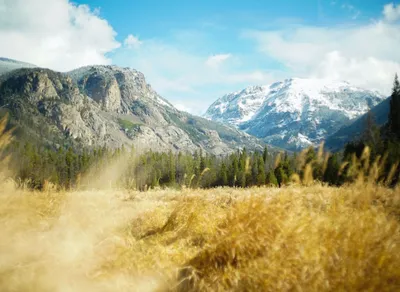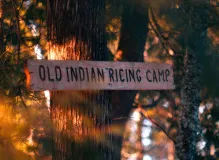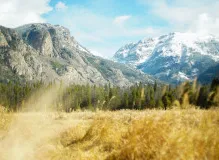For over long years, we have diligently conducted independent research and product testing. When you make a purchase through our links, we may earn a commission.
The Adventure of the Missing Hiker: Glacier National Park
Created: 10 minutes ago

6 min Read

Glacier National Park is a breathtaking wilderness wonderland that offers a myriad of hiking and mountaineering opportunities. However, amidst the pristine beauty and awe-inspiring landscapes, there have been instances of hikers going missing in this vast and rugged terrain. In this article, we will explore the challenges faced by hikers in Glacier National Park, the search and rescue efforts made, and provide valuable information to ensure a safe and enjoyable trekking experience.
What to Expect While Hiking in Glacier National Park
When embarking on a hiking trip in Glacier National Park, it is essential to be prepared for the diverse range of terrain, weather conditions, and potential wildlife encounters. The park covers over 1 million acres, comprising alpine meadows, dense forests, rugged mountains, and pristine lakes. Here are some key points to keep in mind:
Stunning Hiking Trails
Glacier National Park boasts over 700 miles of hiking trails, catering to all levels of experience. Whether you're a seasoned hiker or a beginner, you can find a trail that suits your abilities and preferences. Some popular trails include:
- Highline Trail
- Grinnell Glacier Trail
- Iceberg Lake Trail
- Hidden Lake Trail
- Swiftcurrent Pass Trail
Mountaineering Opportunities
For more adventurous hikers, Glacier National Park offers a plethora of mountaineering opportunities. The park is home to towering peaks, such as Mount Cleveland and Mount Jackson, that attract experienced climbers. However, mountaineering requires specialized skills, equipment, and knowledge. It is advisable to seek guidance from local experts or professional mountaineers before attempting any challenging climbs.
Backcountry Camping
Immersing yourself in the wilderness of Glacier National Park can be an unforgettable experience. The park provides various backcountry camping options, allowing trekkers to spend multiple days exploring remote areas. Acquiring the necessary permits and practicing proper backcountry etiquette is crucial to preserving the park's pristine environment.
Wilderness Areas and Wildlife Encounters
Glacier National Park is characterized by its vast wilderness areas, providing a habitat for a diverse range of flora and fauna. While exploring these wilderness areas, it is essential to be cautious and respectful of the park's inhabitants. It's not uncommon to encounter animals such as bears, mountain goats, moose, and elk. Understanding how to behave during wildlife encounters and storing food properly are essential for minimizing human-wildlife conflicts.
Weather Conditions and Safety
Glacier National Park experiences varying weather conditions throughout the year. Summers are generally mild, with temperatures averaging around 70 degrees Fahrenheit. However, sudden weather changes, including thunderstorms and snowfall, are common even during summer months. It is crucial to check weather forecasts, carry appropriate clothing and gear, and be prepared for sudden shifts in climate. Additionally, having a basic understanding of navigation tools and wilderness survival skills is essential for staying safe in this rugged landscape.
Search and Rescue Efforts
Despite stringent safety measures and educational outreach programs, hikers occasionally find themselves in distressing situations or go missing in Glacier National Park. In such cases, the search and rescue teams, consisting of highly trained professionals, forest rangers, and emergency services, mobilize efforts to locate and assist those in need. These dedicated individuals employ a range of techniques, including aerial searches, dog teams, and ground operations, to cover extensive areas of the park and bring lost hikers to safety.
Emergency Services and Ranger Stations
Glacier National Park is equipped with ranger stations strategically located throughout the park. These stations serve as crucial bases for emergency services and coordination during search and rescue missions. If you find yourself in an emergency or need assistance, it is vital to contact the nearest ranger station or dial emergency services immediately. It's also recommended to carry a reliable means of communication, such as a satellite phone or a Personal Locator Beacon (PLB), when venturing into remote areas.
Safety Precautions for Hikers
To minimize the risk of getting lost or encountering dangerous situations while hiking in Glacier National Park, it is essential to follow these safety precautions:
-
Plan Ahead: Research the trail you intend to hike, including its difficulty level, length, and expected weather conditions. Prepare a detailed itinerary and share it with someone trusted.
-
Carry Essential Gear: Ensure you have the necessary backpacking gear, including a map, compass, GPS device, extra clothing, food, water purifiers or filters, a first aid kit, and a headlamp.
-
Study Trail Maps: Familiarize yourself with trail maps before setting out. Pay attention to vital markers, landmarks, and any potential hazards along the way.
-
Inform Others: Let someone know about your hiking plans, including your starting point, intended route, and estimated time of return. Regularly communicate your progress to them.
-
Stay on Marked Trails: Straying from designated trails increases the risk of getting lost. Stick to established paths to ensure your safety and minimize your impact on the environment.
-
Be Bear Aware: Glacier National Park is home to a significant population of grizzly bears. Carry bear spray, make noise while hiking, and know how to respond if you encounter a bear.
-
Stay Hydrated: Dehydration can lead to fatigue and impair judgment. Carry enough water and stay hydrated throughout your hike.
-
Leave No Trace: Practice Leave No Trace principles, such as disposing of waste properly, respecting wildlife, and leaving the natural environment as you found it.
Essential Gear for Glacier National Park Hiking
When venturing into the vast wilderness of Glacier National Park, having the right hiking gear can make a significant difference in your experience and safety. Here are some essential items to pack for your trek:
Clothing and Footwear
- Moisture-wicking, quick-drying clothing
- Layering options for varying weather conditions
- Sturdy, waterproof hiking boots
- Extra socks
Navigation Tools
- Detailed trail maps
- Compass
- GPS device
- Whistle for signaling
Emergency and Safety Gear
- First aid kit
- Headlamp with extra batteries
- Water purifiers or filters
- Bear spray
- Lightweight, emergency shelter (such as a tarp or bivy sack)
- Communication devices (satellite phone, PLB)
Food and Water
- High-energy, lightweight food
- Water bottles or hydration bladder
- Water purifiers or filters (in case natural water sources need to be used)
Miscellaneous
- Trekking poles (for stability and reducing strain on joints)
- Insect repellent
- Sunscreen
- Hat and sunglasses
- Lightweight camping cookware (if planning to cook meals)
Comparing Hiking Trails in Glacier National Park
| Trail Name | Difficulty | Length (Roundtrip) | Elevation Gain | Highlights |
|---|---|---|---|---|
| Highline Trail | Strenuous | 11.6 miles | 1,950 feet | Panoramic views, wildlife sightings |
| Grinnell Glacier Trail | Moderate to Strenuous | 10.3 miles | 1,600 feet | Glacier views, colorful wildflowers |
| Iceberg Lake Trail | Moderate | 9.7 miles | 1,220 feet | Scenic lake, wildlife encounters |
| Hidden Lake Trail | Easy | 3 miles | 540 feet | Stunning alpine views, mountain goats |
| Swiftcurrent Pass Trail | Moderate | 14.8 miles | 2,200 feet | Alpine meadows, wildlife, historic chalets |
Note: Difficulty levels are subjective and may vary based on individual fitness and hiking experience.
Conclusion
Hiking in Glacier National Park offers a unique opportunity to immerse oneself in the splendor of the natural world. However, understanding the challenges, practicing safety precautions, and being well-prepared can make all the difference in ensuring a safe and enjoyable trekking experience. By following the tips, acquiring essential gear, and respecting the environment, hikers can explore this magnificent park while minimizing risks and maximizing their adventure.
Remember, Glacier National Park is a vast and ever-changing wilderness, deserving both our respect and ethically responsible behavior. With the right mindset, knowledge, and preparation, the adventure of hiking in Glacier National Park can be an experience of a lifetime. So, lace up your boots, pack your gear, and embark on an unforgettable journey into the heart of this wilderness paradise. 🏞️🥾
Frequently Asked Questions (FAQs)
What should I do if I find myself lost in Glacier National Park?
If you find yourself lost in Glacier National Park, try to stay calm and stay put. Use a whistle or a signal mirror to attract attention. If possible, try to find a high vantage point to get a better view of your surroundings. It's important to conserve your energy and not wander further.
Are there any specific hiking trails in Glacier National Park that are recommended for beginners?
Yes, Glacier National Park offers several hiking trails suitable for beginners. Some popular options include the Hidden Lake Overlook Trail, the Avalanche Lake Trail, and the Trail of the Cedars. These trails provide beautiful scenery and are relatively easy to navigate.
What wildlife should I be cautious of while hiking in Glacier National Park?
While hiking in Glacier National Park, it is important to be cautious of wildlife such as bears, mountain goats, and bighorn sheep. Make sure to carry bear spray, hike in groups, and make noise to avoid surprising any animals. It's also important to store food properly to avoid attracting wildlife to your campsite.
Are there any restrictions or permits required for camping in Glacier National Park?
Yes, there are restrictions and permits required for camping in Glacier National Park. Backcountry camping requires a permit, which can be obtained through the park's reservation system. There are also designated campgrounds within the park that have specific rules and regulations. It's important to familiarize yourself with these guidelines before planning a camping trip.
What is the best time of year to visit Glacier National Park?
The best time to visit Glacier National Park is during the summer months, typically from June to September. During this time, the park's hiking trails are accessible, the weather is warmer, and the wildlife is more active. However, it's important to note that the park can get crowded during peak tourist season, so early reservations are recommended.


